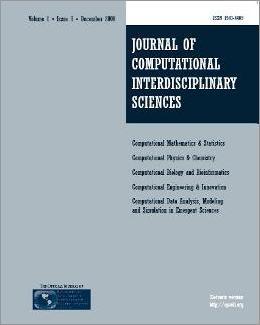
Editorial Office:
Management:
R. S. Oyarzabal
Technical Support:
D. H. Diaz
M. A. Gomez
W. Abrahão
G. Oliveira
Publisher by Knobook Pub


Editorial Office:
Management:
R. S. Oyarzabal
Technical Support:
D. H. Diaz
M. A. Gomez
W. Abrahão
G. Oliveira
Publisher by Knobook Pub
doi: 10.6062/jcis.2012.02.02.0039(Free PDF)
César A. Caretta and Elcia M.S. Brito
We present here a technique for correlating T-RFLP fingerprints with genomic clone libraries, using a in silico restriction analysis, in order to identify the microbial (Bacteria and Archaea) communities present in an environmental sample. This technique is very useful for independent of culture metagenomic studies. We also show some results on the application of this technique to 3 environmental samples from an anthropogenically extreme site. We confirm that T-RFLP results are quite reproducible both in peaks location and area. We found that the peak position (Terminal Restriction Fragment, TRF) can be identified with an uncertainty of only 0.3 base pair, while the percentage o fluorescence (frequency of population) has about 4% of relative uncertainty. Using the TRFs obtained from the in silico restriction as reference, we found that deletion and insertion during electrophoresis step of the T-RFLP and cloning must be taken into account. They typically produce a shift in the range [-2 to +1] in PCR/cloning/sequencing and [-4 to +1] in PCR/T-RFLP, independent of fragment size. This also means that deletion is more usual than insertion. The in silico restriction analysis allowed us to recognize 100% of the T-RFLP peaks of abundant populations, 60% of intermediate and 50% of poorly represented ones. Also, almost all populations recovered in the clone library could be associated to T-RFLP peaks, but not vice-versa , confirming that the T-RFLP is an efficient technique for detecting the less dominant populations of a microbial community.
Cutting stock problem, computational heuristic method, pattern reduction procedure, linear programming.
[1] ALTSCHUL SF, GISH W, MILLER W, MYERS EW & LIPMAN DJ. 1990. J. Mol. Biol., 215: 403-410.
[2] BRITO EMS, ANDRADE LH, CARETTA CA & DURAN R. 2007. Microorganisms Bioprospection: A New Tendency in Microbial Ecology, in Leading-Edge Environmental Biodegradation Research, pp. 199-222, ed. Lyman E. Pawley, Nova Science Publ.
[3] BRITO EMS, PINÓN-CASTILLO HA, GUYONEAUD R, CARETTA CA, GUTIÉRREZ-CORONA JF, DURAN R, NEVAREZ-MOORILLON GV, REYNA-LÓPEZ GE & GO NI-URRIZA MS. 2011. Appl. Microbiol. and Biotechn., submitted.
[4] CHAO A. 1984. Scandinavian J. Stat., 11: 265-270.
[5] CHAO A. 1987. Biometrics, 43: 783-791.
[6] DAHLLÖF I. 2002. Curr. Opinion Biotech., 13: 213-217.
[7] FOX GE, STACKEBRANDT E, HESPELL RB, GIBSON J, MANILOFF J, DYER TA, WOLFE RS, BALCH WE, TANNER RS, MAGRUM LJ, ZABLEN LB, BLAKEMORE R, GUPTA R, BONEN L, LEWIS BJ, STAHL DA, LUEHRSEN KR, CHEN KN & WOESE CR. 1980. Science, 290: 457-463.
[8] OSBORN AM, MOORE ERB & TIMMIS KN. 2000. Environmental Microbiology, 2: 39-50.
[9] SAIKI RK, GELFAND DH, STOFFEL S, SCHARF SJ, HIGUCHI R, HORN GT, MULLIS KB & ERLICH HA. 1988. Science, 239: 487- 491.
[10] MUYZER G, DE WAAL EC & UITTERLINDEN AG. 1993. Appl. Env. Microbiol., 59: 695-700.
[11] VAN NEIL CB. 1946. Cold Spring Harbor Sympo. Quant. Biol., 11: 285-301.
[12] STACH JEM, BATHE S, CLAPP JP & BURNS RG. 2001. FEMS Microbiol. Ecol., 36: 139-151.
[13] TORSVIK V, GOKSOYR J & DAAE FL. 1990. Appl. Environ. Microbiol. 56:782-787.
[14] WOESE C. 1987. Microbiological Reviews, 51: 221-271.
[15] ZUCKERKANDL E&PAULING L. 1965. J. Theor. Biol., 8: 357-366.